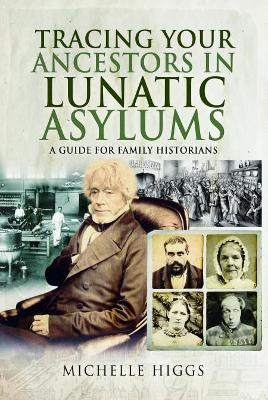Tracing Your Ancestors
2 total works
While there are popular and academic books on servants and domestic service, as well as television dramas and documentaries, little attention has been paid to the sources family historians can use to explore the lives and careers of their servant ancestors. Michelle Higgs's accessible and authoritative handbook has been written to serve just this purpose. Covering the period from the eighteenth century through to the Second World War, her survey gives a fascinating insight into the conditions of domestic service and the experience of those who worked within it. She quotes examples from the sources to show exactly how they can be used to trace individuals. Chapters cover the historical background of domestic service; the employers; the social hierarchy within the servant class; and the recruitment and responsibilities of servants. A comprehensive account of the available sources - the census, wills, directories, household accounts, tax and union records, diaries and online sources - provides readers with all the information they need to do their own research.
This short, vivid overview will be invaluable to anyone keen to gain a practical understanding of the realities of servants' lives.
This short, vivid overview will be invaluable to anyone keen to gain a practical understanding of the realities of servants' lives.
How can you trace forebears who were patients in lunatic asylums and find out about their lives? What sources can you consult to discover their personal histories and gain an insight into their experiences? In this concise, accessible handbook, Michelle Higgs answers these questions. She provides a fascinating introduction to the subject and gives readers the means to explore the records for themselves.
She concentrates on the period from the eighteenth century through to 1948 when the National Health Service was founded and looks in particular at the Victorian era which is the most popular period for research. Using original records, contemporary accounts, photographs, illustrations and case studies of real individuals, she brings the story of the asylums and their patients to life.
Different types of institution are described such as private madhouses, county lunatic asylums, facilities for idiots and imbeciles, and military mental hospitals. Chapters look at the admission procedures and daily routine of patients, plus different kinds of mental illness and how they were treated - for instance, those with depression or mania, criminal lunatics, mothers with puerperal insanity, epileptics and soldiers suffering from shell shock. There are sections on the systems in Scotland and Ireland, as well as England and Wales. Information is provided on all the relevant sources, from wills and the census to casebooks and admission and discharge registers.
She concentrates on the period from the eighteenth century through to 1948 when the National Health Service was founded and looks in particular at the Victorian era which is the most popular period for research. Using original records, contemporary accounts, photographs, illustrations and case studies of real individuals, she brings the story of the asylums and their patients to life.
Different types of institution are described such as private madhouses, county lunatic asylums, facilities for idiots and imbeciles, and military mental hospitals. Chapters look at the admission procedures and daily routine of patients, plus different kinds of mental illness and how they were treated - for instance, those with depression or mania, criminal lunatics, mothers with puerperal insanity, epileptics and soldiers suffering from shell shock. There are sections on the systems in Scotland and Ireland, as well as England and Wales. Information is provided on all the relevant sources, from wills and the census to casebooks and admission and discharge registers.

